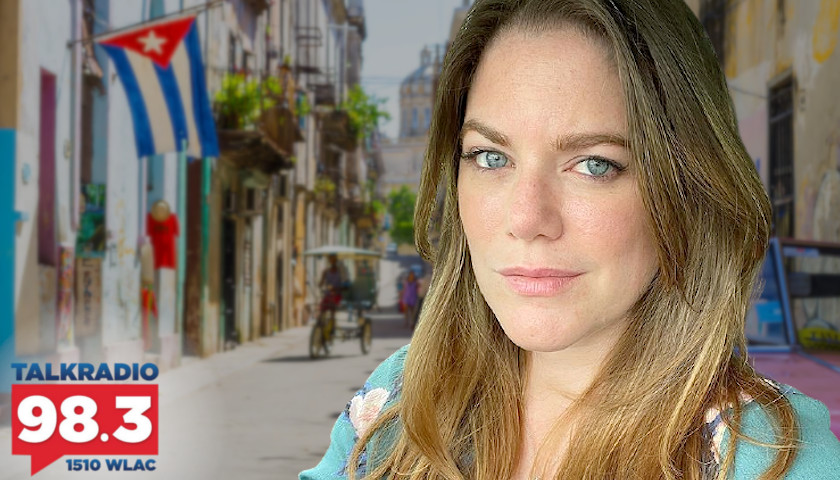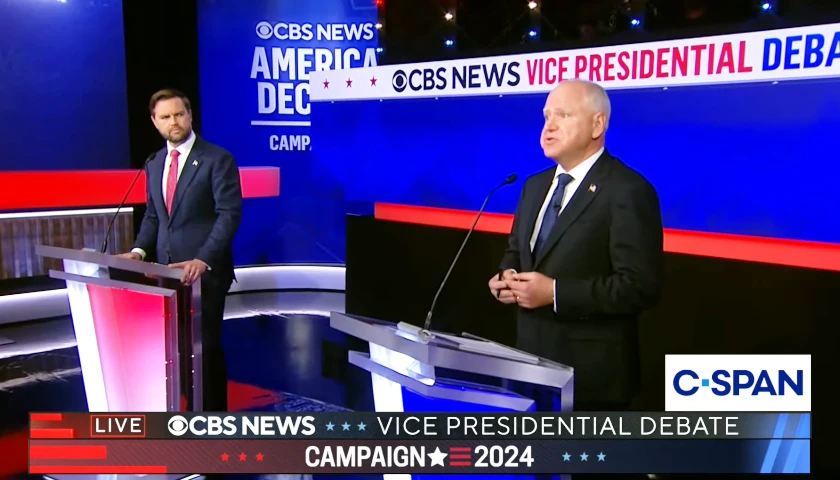Live from Music Row, Monday morning on The Tennessee Star Report with Michael Patrick Leahy – broadcast on Nashville’s Talk Radio 98.3 and 1510 WLAC weekdays from 5:00 a.m. to 8:00 a.m. – host Leahy welcomed founder and editor of ADN America, Gelet Fragela to the newsmaker line to talk about the different cultures of Latino communities and America’s top five dirtiest cities run by Democrat mayors.
Leahy: We are delighted to welcome to our newsmaker line my very good friend, the great Gelet Fragela, who’s the founder and editor of ADN America. Good morning, Galet.
Fragela: Hi, Michael. I’m so excited to be here with you this morning.
Leahy: Last time we met, we were out in Phoenix, Arizona.
Fragela: I know.
Leahy: And had a nice visit with Kari Lake back in July and we have kept up and done a lot of work together. Tell our listeners Gelet what ADN America is.
Fragela: ADN America is a US-based news site, and we cover a lot of what’s happening with the Latino community in the United States. We focus a lot on liberty, freedom, and human rights also across the region. Especially in the areas in Latin America and everything that’s happening that resonates with the Hispanic community.
We try to cover the news that is underrepresented today in the mainstream media and the Hispanic mainstream media. Because as we know, and we have talked about this many times, we’re living in a situation in a world that is very biased, the media is very biased, and a lot of the time some of the conservative views are not represented accurately in the media. So we’re trying to debunk those myths and combat that.
Leahy: And your audience is basically Hispanic Americans in the United States. You’ve got an English version and you also have a Spanish language version as well. Tell us a little bit, people who live here in Tennessee may think Hispanic America is just one group, but there are multiple groups. There are Cuban Americans, Mexicans, and Puerto Ricans. Just tell us a little bit about the differences.
Fragela: Definitely. I tell people that there’s no such thing as a Hispanic group. We are so different. It’s not a monolithic group. Cuban Americans, Mexicans, Puerto Ricans, and people from Central America like Nicaragua, El Salvador, and Guatemala. We have certain cultural differences and then we have similarities.
We for sure have cultural similarities, certain music, language, and certain food. But we are very different. Each community has very different sensitive issues that also determine a lot of the way we vote. And so I think it’s important to accurately represent those differences. And that’s what we try to do.
In ADN America, we have a section that is more directed to Mexican Americans. We have sections for Puerto Ricans and Cuban Americans. We also cover a lot of what’s happening in Nicaragua and Venezuela, although we cover the region completely.
But we try to focus on those communities that live in the United States that make up a majority of the Hispanics in the United States. And then as you mentioned, we have the English sites. And then I tell to people this is like what my son will read in a few years, right?
Hispanics that are born in this country are not, like me, foreign-born, they are more culturally assimilated. So they’re going to be reading the same thing that any like you would be reading. But there are certain cultural differences, like certain music that they’re exposed to at a young age and certain artists or food that they also read about.
They’re bicultural. So that’s why we try to also represent that bicultural group on the English page with those issues and those cultural issues that sometimes are not going to find in the other media.
But everything is based on the principle that we all, no matter where we come from, share certain common values that are enshrined in our Constitution, that we should preserve in this country, that we should honor those freedoms that we enjoy in America and we should fight for them.
Leahy: You yourself were born in Cuba and you were kind of a television star in Cuba for a bit and as a child, had a dramatic escape, if you will, from Cuba into, I guess it was [Costa Rica] where you lived for a while and then came to, your base in Miami. As a journalist, you know Univision and Telemundo are like, left-wing. (Chuckles)
Fragela: Yes they are. I worked there.
Leahy: It’s one of the reasons you started Adnamerica.com and you’re really great at doing what I call these little twisty stories that are interesting. You have one up now. Your own Katarina Hall has a story up. Headline: America’s Top 5 Dirtiest Cities Run by Democrat Mayors, Study Finds. (Laughs)
Fragela: I grew up in Costa Rica… But yes, Katarina, who is actually from Guatemala, wrote this very interesting story about a recent study by Lone Star, which compares over 150 of the largest cities across the nation across four categories.
Those include pollution, living conditions, infrastructure, and consumer satisfaction. And what they found is that the dirtiest cities in 2023 in the United States are actually run by Democratic mayors. We’re talking about in Houston, which is run by a Democratic mayor. Then we go to Newark, New Jersey, which is run by Democratic Mayor Ras Baraka.
Then of course, somewhere in California, we have to find a city that is very dirty and that unfortunately is San Bernardino, which ranks as America’s 3rd dirtiest city and is run by Democratic Mayor Helen Tran. And then we go to Detroit, run also by Democratic Mayor Mike Duggan.
And lastly, Jersey City, which is run by Democratic Mayor Stephen Fulop, also ranks second for poor living conditions and 15 for consumer satisfaction. So that to me, tells me something, because when you look at the flip side of all of this, America’s cleanest city award went to Virginia Beach in Virginia for the second year in a row, and that is run by a Republican mayor, Robert Dyer. (Laughs)
Leahy: That’s just a coincidence, Galet.
Fragela: Coincidence.
Leahy: Just a coincidence.
Fragela: This is like a statistic cherry-picking. No, it’s not. It’s a fact. (Laughs)
Leahy: Crom Carmichael, our original all-star panelist is in studio. Crom has a question for you, Gelet.
Carmichael: I have two questions. What percentage of your readers read the English version and what percentage read the Spanish version?
Fragela: That is a very interesting question. It has changed throughout. We’ve only been live for like a year and a half, but it has changed a little bit. But I would say that 60 percent to 65 percent read our page in Spanish and the rest in English. And it also depends on the day and depending on the story. But most of our readers are Spanish readers.
And that also tells the story of Hispanics in the US. Because half of the demographic is foreign-born like me, which are still reading in Spanish, and half of the demographic that is second or third-generation is under the age of 18. Because the Latino population is very young in the United States. You have a big percentage that still hasn’t reached adulthood.
Listen to today’s show highlights, including this interview:
– – –
Tune in weekdays from 5:00 – 8:00 a.m. to The Tennessee Star Report with Michael Patrick Leahy on Talk Radio 98.3 FM WLAC 1510. Listen online at iHeart Radio.





